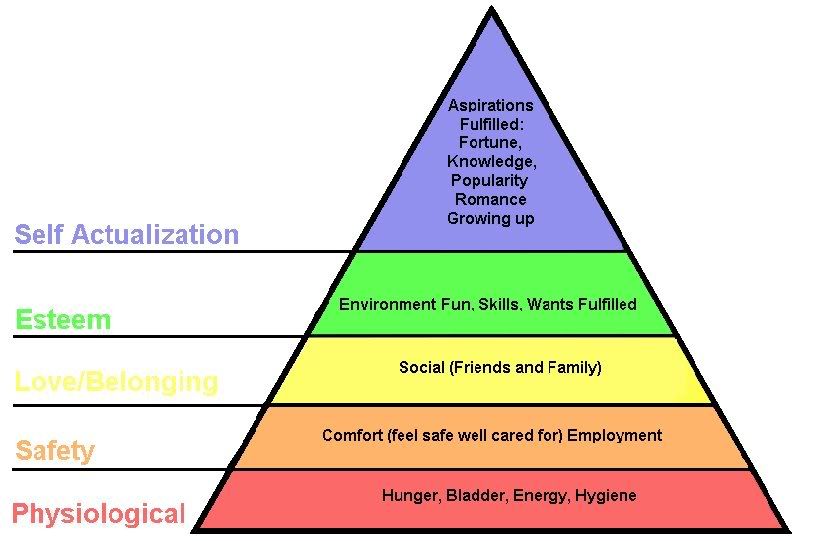
Maslow's hierarchy of needs is a theory in psychology that Abraham Maslow proposed in his 1943 paper A Theory of Human Motivation,[1] which he subsequently extended to include his observations of humans' innate curiosity.
Maslow studied exemplary people such as Albert Einstein, Jane Addams, Eleanor Roosevelt, and Frederick Douglass rather than mentally ill or neurotic people, writing that "the study of crippled, stunted, immature, and unhealthy specimens can yield only a cripple psychology and a cripple philosophy."[2] Maslow also studied the healthiest one percent of the college student population. This subjectivity troubled even Maslow himself. In his book, "The Farther Reaches of Human Nature", Maslow writes, "By ordinary standards of laboratory research...this simply was not research at all. My generalizations grew out of my selection of certain kinds of people. Obviously, other judges are needed."
While Maslow's theory was regarded as an improvement over previous theories of personality and motivation, it had its detractors. For example, in their extensive review of research that is dependent on Maslow's theory, Wahba and Bridgewell [3] found little evidence for the ranking of needs that Maslow described, or even for the existence of a definite hierarchy at all. Chilean economist and philosopher Manfred Max Neef has also argued that fundamental human needs are non-hierarchical, and are ontologically universal and invariant in nature - part of the condition of being human; poverty, he argues, is the result of any one of these needs being frustrated, denied or unfulfilled
Aristotle was thinking and writing about the concepts of Maslow's hierarchy centuries before Maslow lifetime.